
Review on ⚡️ 5V Relay Module for Arduino Raspberry Pi DSP AVR PIC ARM - JBtek 4 Channel by Darryel Tokarczyk

This board + Raspberry Pi + good power supply = great combo!
Great board for Raspberry Pi. Provided you have a reliable power supply you can power this board with the +5V provided on the header (pin #2). The relay board is fully buffered meaning the relay coils are not driven directly from the GPIO pins protecting the Pi and meaning this board is plug and play. If you use the Rasp Pi a lot, I highly recommend a USB volt/ammeter combo so you can monitor your power consumption. Under full load you should make sure the voltage on your USB port is as close to 5.0VDC as possible, anything below 4.65VDC will cause Pi and stability issues. Your amperage should never exceed the capacity of the USB power adapter. I'm using a 2A (2000mA) power supply and at full load (all relays on) the Raspberry Pi B+ only gets 0.56A (560mA), so I'm fine with the spec. With all relays off I draw about 0.24A (240mA). CONNECT: The board has a six-pin connector labeled GND, IN1, IN2, IN3, IN4, VCC and a two-pin jumper connector labeled VCC/JD-VCC. . Leave the jumper set. For GND you can connect to any of the GND pins of the Pi connector (pins 6,9,14,20,25,30,34,39). Connect to pin 2 (+5V) for VCC. Connect each of the IN pins to a GPIO pin (I used GPIOs 8,9,10,11 which are pins 24,19,21,23 respectively). HOW TO MANAGE IT: Use Python (should be available in your RasPi distro) along with the RPI.GPIO library. You must run your scripts with sudo as root access is required to manage the GPIO pins. You can set a GPIO pin using GPIO.output(PIN, True) to turn the relay off and GPIO.output(PIN, False) to turn it on. My only criticism is that the logic is reversed. When applied to GPIO pin High (TRUE) the relay should turn on and when applied to GPIO pin Low (FALSE) it should turn off, but this is easy to fix in software. Pros: Plug and play, just works. Will get more of this. You don't have to worry about building interface circuits, transistors, load calculations up to mA, or anything overly complex. Basic research on the GPIO library for Python, some GPIO pinouts for the RasPi and I was up and running within minutes. a minor thing and can easily be fixed in the software. Conclusion: If you want to control your hardware with your Raspberry Pi, use this board.
- Electronics
- Big and chunky
New products
Comments (0)
Top products in 🖥️. Single Board Computers
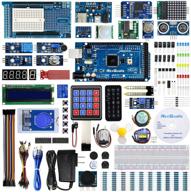
REXQualis Comprehensive Starter Kit with Arduino MEGA 2560 & Detailed Tutorial for Arduino IDE Compatibility

11 Review
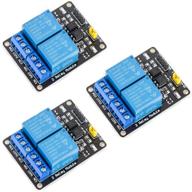
🌐 MCIGICM 2 Channel DC 5V Relay Module: Optocoupler Low Level Trigger Expansion Board for Arduino UNO R3, DSP, ARM, PIC, AVR, STM32, Raspberry Pi

11 Review
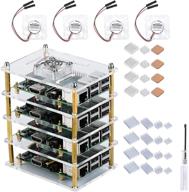
GeeekPi Raspberry Pi Cluster Case with Cooling Fan and Heatsink for Pi 4 Model B, 3 Model B+ & 3/2 Model B

11 Review

55" TV LG OLED55C2RLA 2022 HDR, OLED, dark titanium

38 Review
Another interesting products

🖥️ Helifouner 450-Piece Computer Standoffs Spacer Screws Kit: Ideal for Hard Drive, Motherboard, Fan, Power Graphics & Computer Cases

10 Review

uxcell 3.5" HDD Screw Black 200pcs for Computer PC Case - Flat Phillips Head - 6#-32 - Hard Drive Fasteners

10 Review
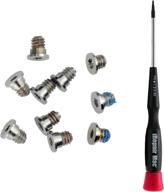
MacBook Retina 13-inch (A1425, A1502) and 🔩 15-inch (A1398) Bottom Case Screw Set with Pentalobe Screwdriver

11 Review
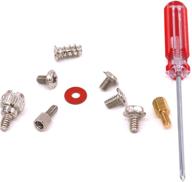
Glarks 660 Pieces Phillips Assortment Motherboard

10 Review

